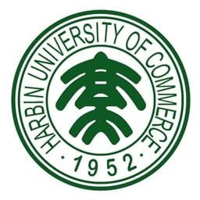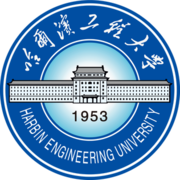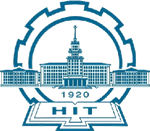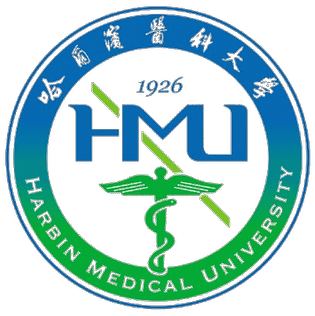Harbin University of Commerce, founded in 1952 , is the first multidisciplinary commercial university in New China and one of the ten key universities in Heilongjiang Province. The school is positioned as a teaching and research university. In 2006 , it was awarded "Excellent" in the evaluation of the undergraduate teaching level of ordinary colleges and universities by the Ministry of Education. In 2012 , it was selected as a national construction institution for the "Basic Capacity Construction Project of Universities in the Midwest". In 2013 , it became a member of the Sino-Russian Economic University Alliance. Awarded the title of the 4th "National Civilized Unit", and won the "National May 1st Labor Award" in 2017. In 2018 , the discipline of business administration entered the ranks of domestic first-class disciplines in Heilongjiang Province, and the discipline of applied economics entered the innovation project of the discipline system of philosophy and social sciences in Heilongjiang Province. In 2020 , it was rated as "Demonstration School for Deepening Innovation and Entrepreneurship Education Reform" in Heilongjiang Province. The school occupies a total area of 1,165,500 square meters, and the total area of the school building is 661,800 square meters. There are 23,725 full-time undergraduate students , 198 full-time doctoral students, and 2,432 master students . The school has a strong faculty, with 1,540 faculty members . Among them, there are 1,180 full-time teachers , 253 professors and 575 associate professors; 746 master and 536 doctoral teachers respectively ; 980 graduate tutors , including 105 doctoral tutors . There are 1 member of the subject evaluation group of the Academic Degrees Committee of the State Council , 1 national-level candidate for the "New Century Talent Project" , 1 candidate for the Ministry of Education's "New Century Excellent Talents Support Program" , and 18 experts with special government allowances from the State Council . There are 7 specially- appointed professors of Longjiang Scholars , 16 experts with special allowances from the provincial government , 13 young and middle-aged experts at the provincial (ministerial) level , 42 provincial leaders and reserve leaders , and 15 provincial teaching teachers . The school has 68 undergraduate majors covering eight major disciplines including economics, management, engineering, law, liberal arts, science, medicine, and art ; 4 first-level discipline doctorate authorization points, 20 second-level discipline doctorate authorization points, 13 first-level discipline master's degree authorization points, 70 second-level discipline master's degree authorization points, 1 independent second-level discipline master's degree authorization point, 16 professional category master's degree authorization points; 4 provincial first-level key disciplines And 1 provincial key discipline group (tertiary industry development and innovation); in the fourth round of national discipline evaluation, business administration was rated as B category, and applied economics, food science and engineering were rated as B-category. It has 3 post-doctoral research stations and 2 post-doctoral research workstations; it has won 3 second prizes for national teaching achievements, 6 national specialties, 11 national first-class undergraduate professional construction sites, and national professional comprehensive reform pilot projects. 3 national-level excellent courses, 4 national-level first-class courses, 1 national-level virtual simulation experimental teaching center, 1 national-level experimental teaching demonstration center, and 28 national-level planning textbooks; it has a national key construction position of the Ministry of Education. 1 teacher training base, 1 provincial-level talent training model pilot area, 1 provincial-level economic and trade talent training base for Russia, 15 provincial-level key majors, 9 provincial-level first-class undergraduate major construction sites, and provincial-level characteristic applications There is 1 model undergraduate demonstration major cluster, 3 provincial-level professional comprehensive reform pilot projects, 49 provincial-level excellent (first-class) courses, 5 provincial-level teaching teams, and 5 provincial-level experimental teaching demonstration centers. The school now has 1 national and local joint engineering research center for innovative anti-tumor drugs, 1 natural engineering research center for anti-tumor drugs of the Ministry of Education, 4 provincial key laboratories, 1 provincial and ministerial joint key laboratory, and provincial engineering research. There are 2 centers and 4 provincial key laboratories in general universities; it has one of the first batch of key cultivation think tanks in Heilongjiang Province, one provincial key research base of philosophy and social sciences, one provincial social science research center, and a key point of humanities and social sciences of the Provincial Department of Education. There are 2 research bases, 1 provincial collaborative innovation center, 1 provincial SME research center, and 1 provincial social organization and social construction training base. The school has been recruiting students from 30 provinces, municipalities and autonomous regions across the country. Since its establishment 69 years ago, the school has cultivated a total of 150,000 professionals of various types for the society , many of whom have become well-known experts and scholars, successful entrepreneurs and outstanding party and government management cadres, with outstanding achievements in talent training. The school has a number of scientific research achievements to fill the domestic gap. In 1959 , the first food machine in China, the 601 -type dumpling machine, was developed; the use of chlorella to solve the problem of the harm of alternative food to human health has achieved remarkable results. In 1960 , he initiated one of the three major accounting methods in China, the "double-entry accounting method for property receipts and payments". In the same year , the teaching method of "reading, reading, discussing, speaking, doing, researching and writing" was commended and promoted at the National Cultural and Educational Talents Conference . Teaching experience is reported. In 1981 , the academic theory of cooperative development of the Northeast Asian economic circle was first proposed. In 1988 , the first computerized automatic refueling machine in China was developed. In 1996 , the first financial and currency museum in a university was built, and a number of influential scientific research achievements were launched. In 1999 , completed the national major scientific and technological research project "Commercial Automation Technology Integration Demonstration Project". After 2000 , the school's research results in the fields of applied economics, business administration, Chinese pharmacy, food science and other fields have had an important impact in the country. In the past 5 years, the school has undertaken more than 900 vertical projects such as the National Natural Science Foundation of China, the National Philosophy and Social Science Foundation Project, the National Science and Technology Support Program Project, and the Ministry of Education Project, and more than 300 horizontal projects of various types , and applied for invention patents and utility models. More than 500 patents , 180 authorized . The scientific research achievements have won more than 200 awards at or above the provincial and ministerial level, and more than 300 books and 5,000 papers have been published. The school publishes 3 academic journals including "Business Research", "Journal of Harbin University of Commerce (Natural Science Edition)" and "Journal of Harbin University of Commerce (Social Science Edition)", of which "Business Research" is a CSSCI source journal and a national Chinese core journal. And China's excellent academic journals with international influence, "Journal of Harbin University of Commerce (Social Science Edition)" is the source journal of CSSCI extended edition and the top 100 social science journals in national universities. The school attaches great importance to foreign exchanges and cooperation, and has successively established educational cooperation and academic exchanges with 108 colleges and universities in 27 countries and regions , including the United Kingdom, the United States, Russia, South Korea, Japan, Kazakhstan, the Netherlands, and Norway. Ministry) Study Abroad Service Center Study Abroad Training Base, Chinese Chinese Proficiency Test ( HSK ) Base, Ministry of Commerce "Foreign Aid Advanced Degree Education Special Program" project partner institution, Ministry of Commerce foreign aid training project organizer. In the past ten years, it has trained more than 3,000 long-term and short-term students from more than 50 countries including South Korea, Russia, Japan, Poland, France, Ukraine, etc. It has trained more than 2,000 government officials, business executives and school teachers from 96 countries and regions in Asia, Africa, South America and the Caribbean, the South Pacific and the Commonwealth of Independent States.
Show less










